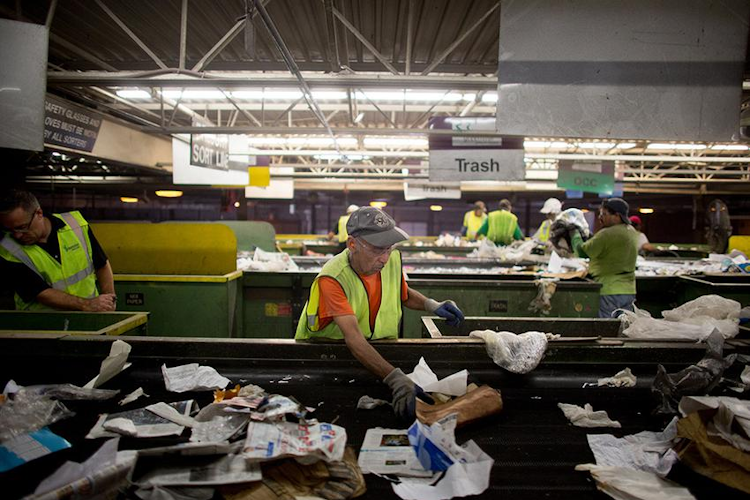Sorting waste: These 3 obstacles that hold back consumers
If the motivation is important, it is not sufficient to go through with the sorting gesture.
While 9 out of 10 American people say they sort their waste, only half of them do this systematically. Among the obstacles encountered by consumers, 3 main obstacles would largely explain this discrepancy.
Yellow trash can, green trash can… Sorting waste is now part of our daily lives. It would even place itself at the top of the civic actions most practiced by the Americans. The United States have adopted sorting gestures very quickly since the 1990s, according to a company created by the mass consumption and distribution sector to reduce waste. environmental impact of their packaging and paper.
If 9 out of 10 American people say they sort their waste, only half of them do this systematically, that is to say at home and outside, in the kitchen and in the bathroom, however there are 3 main obstacles hindering this behavior – as well as the solutions proposed to overcome them.
Lack of consumer information
Imagine that you are faced with someone who says to you: ‘I don’t sort’. To try to convince him, you use rational arguments – by explaining to him, for example, the importance of recycling for the protection In fact, that is not enough: motivation, in the end, is not what pushes us the most to sort. To understand where it gets stuck, waste management experts studied the behavioral script of the sorting gesture, that is to say, she broke down the different stages.
Having the object in your hands, wondering what to do with it, consulting a poster summarizing the sorting instructions posted on the fridge, or turning to someone around you who “knows about it”. Then, understand the information given… and finally, go down to your trash room – more or less clean and easy to access – and find out what is already in the sorting bin.
Conclusion of this analysis: the best way to engage consumers in sorting their waste is to ensure that this gesture is faster, and above all, and that it requires the least possible attention from them (for this, it is imperative to promote the accessibility of information). In an attempt to contribute to this, a junk disposal company has developed the “Sorting Guide” application, allowing the user to consult the sorting instruction corresponding to a product free of charge, depending on the county where it is located.
Loss of confidence in the usefulness of sorting
What’s the point? The question arises for citizens, who want – and rightly so – that their efforts be rewarded with concrete effects. However, their confidence is sometimes undermined. There can be accidents of collection. For example, during the recent strikes of garbage collectors, the waste accumulated so much that sorting was not possible. These are very destabilizing. Nevertheless, the smooth running of the collection is in the interest of the communities, because they are the owners of the materials collected.
In fact, on leaving the sorting centres, the packaging is resold to the various recycling channels. Their price depends, in part, on the price of the raw material from which the material is derived. Thus, a high oil price makes the recycling of plastic all the more financially attractive for the organizers of the collection.
The issue of the availability of sorting bins
But how do you sort if there is no suitable bin available?
The most blocking obstacle is the availability of the sorting bin. In 2021, a waste management company estimated that some 135 million American people had the possibility of sorting all packaging – including plastics – and paper. Objective: that 100% of American people have full access to sorting by 2025. Although our fellow citizens collect an average of 70 kg of packaging and paper per year, this figure nevertheless masks local disparities, with more than 100 kg in rural regions in the East in particular, compared with half as many in urban areas.
An important step has nevertheless been taken, thanks to the simplification of sorting instructions. Since 2012, local authorities have been offering to put all packaging in the sorting bin, while the historic sorting instruction of 1995 excluded plastics other than bottles and transparent vials, the latter being composed mainly of polyterephthalate. ethylene (PET) or high density polyethylene (HDPE), which are easier to recycle. A change which, in addition to having facilitated the gesture of sorting for the consumer, has also made it possible to experiment with the recycling of other types of plastics.
You should know that some plastics, such as polystyrene or opaque PET, are more difficult to decompose. This explains why only 30% of plastic household packaging is recycled – compared to more than 85% for glass and almost 100% for metals such as steel.














